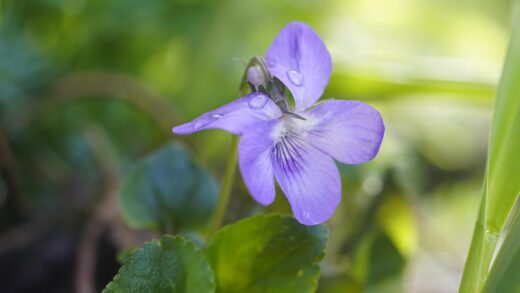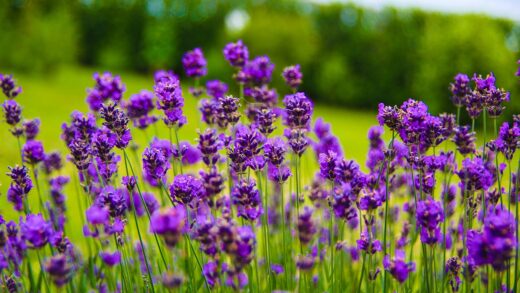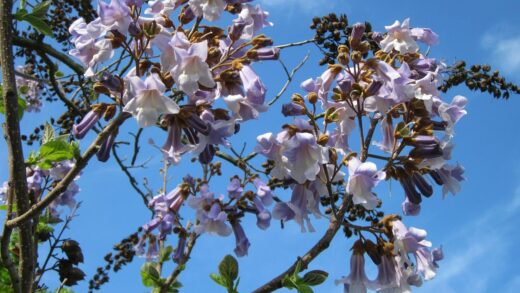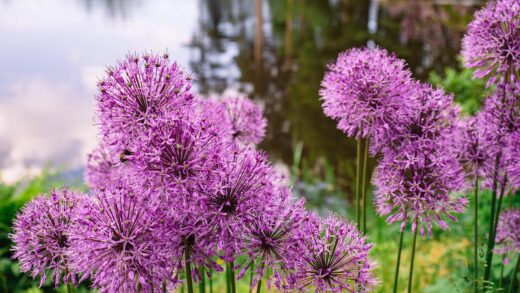Freesia, this elegant and fragrant flower, captivates the hearts of many garden enthusiasts, yet its cultivation is not always without challenges. For our plants to develop healthily and reward us with abundant blooms, it is essential to be aware of the most common diseases and pests that can threaten them. In this article, I undertake the task of presenting these problems in detail and offering practical advice for their prevention and control. Plant protection, indeed, is not witchcraft but merely requires attention and some expertise for our freesias to shine in their full glory.
During freesia cultivation, numerous factors influence the general health status of the plants and their resistance to pathogens and pests. The selection of a suitable growing site, ensuring well-drained soil rich in nutrients, and creating optimal light and temperature conditions are of fundamental importance. If these conditions are not met, plants can weaken and become more susceptible to various infections. Therefore, the first and most important step in prevention is always the application of careful cultivation technology.
Early recognition of diseases and pests is crucial for successful protection. Plants should be regularly inspected, paying attention to unusual changes on leaves, stems, flowers, or corms, such as spots, distortions, or signs of pest presence. It is important to differentiate between biotic problems, caused by living organisms (fungi, bacteria, viruses, pests), and abiotic stress symptoms, caused by environmental factors (e.g., nutrient deficiencies, overwatering, frost), as their treatment requires different approaches.
The concept of Integrated Pest Management (IPM) is also prominent in freesia cultivation, involving the coordinated application of various protection methods. Its essence is to minimize the use of chemical plant protection products, prioritizing preventive agrotechnical procedures, biological control options, and the selection of resistant varieties. The goal is not the complete eradication of pests, but to maintain their population at a level that does not cause economic damage, while also protecting the environment and human health.
Fungal Diseases: The Invisible Enemies
Freesias can be attacked by numerous fungal diseases, which can cause significant damage to foliage, flowers, and even corms. These microscopic pathogens particularly favor humid, moist environments and poor air circulation, so in such conditions, increased attention must be paid to prevention. Among the most common fungal problems are Fusarium wilt, Botrytis blight (grey mold), and rusts, whose timely recognition and treatment are essential for saving the plants.
More articles on this topic
Fusarium wilt, caused by the fungus Fusarium oxysporum f. sp. freesiae, is one of the most destructive diseases of freesia. Symptoms of infection usually begin with yellowing and wilting of the leaves, eventually leading to the complete death of the plant. The disease also attacks the corms, where a brownish, dry rot can be observed internally. The pathogen can survive in the soil and on infected plant debris for a long time, so the key to control is prevention: use healthy, certified planting material, treat corms with a fungicide before planting, and ensure proper soil disinfection or crop rotation.
Botrytis blight, also known as grey mold, caused by the fungus Botrytis cinerea, is also a common visitor in freesia plantings, especially during cool, damp weather. The disease can affect flowers, buds, leaves, and stems, where watery spots appear, followed by the development of the characteristic grey, fluffy mold. Infected plant parts दशकry quickly. The basis of control is ensuring adequate spacing between plants for good air circulation, avoiding wetting the foliage during watering, and removing infected plant parts. In severe infections, the application of an appropriate fungicide may become necessary.
Rust diseases, which can be caused by various Uromyces species, appear as characteristic orange or brown, powdery pustules on the undersides of leaves and occasionally on stems. These pustules contain the fungal spores, its reproductive structures. In cases of heavy infection, leaves may dry prematurely and fall, weakening the plant and reducing flower yield. For prevention, ensure good air circulation among plants, avoid excessive nitrogen fertilization, and remove infected leaves at the first sign of symptoms. If necessary, contact or systemic fungicides can be used for control.
Challenges of Bacterial and Viral Infections
In addition to fungal diseases, freesias can also be threatened by bacterial and viral pathogens, which are often even more difficult to manage and can cause serious damage to the crop. In the case of these infections, prevention, especially adherence to strict hygiene rules, plays a paramount role. While bacterial infections can sometimes be treated, there is currently no direct cure for viruses, so the emphasis here is entirely on prevention.
More articles on this topic
Bacterial soft rot, most commonly caused by bacteria such as Erwinia carotovora (now known as Pectobacterium carotovorum), primarily attacks corms and the lower, soil-level parts of the plant. Infected tissues become watery, soft, and emit a characteristic, unpleasant odor. The development of the disease is favored by high soil moisture, poor drainage, and injuries to the corms. As a preventive measure, careful handling and storage of corms are crucial, along with providing well-drained soil and avoiding overwatering. Infected plants and corms should be promptly removed and destroyed.
Freesias can be infected by several viruses, one of the most significant being Freesia Mosaic Virus (FreMV). Symptoms of viral infection can be varied: mottling (lighter and darker patches), streaking, or distortion may appear on the leaves; flowers may show color breaks or streaks; and plant growth may be stunted. Viruses are primarily transmitted by insect vectors, most commonly aphids, but can also be spread through infected plant sap, propagating material, or tools. Since viral infections cannot be cured, control focuses on prevention: use guaranteed virus-free propagating material, control virus-transmitting insects, and immediately remove infected plants from the stand.
In the fight against bacterial and viral diseases, prevention is of utmost importance, as treating established infections is extremely difficult, and in the case of viruses, impossible. Therefore, careful selection of propagating material is crucial; if possible, choose corms from certified, disease-free sources. Tools used during cultivation (pruning shears, knives) should be regularly disinfected to prevent the transmission of pathogens from one plant to another. Effective control of virus-vectoring pests, such as aphids, also contributes to the prevention of viral infections.
Animal Pests: An Army of Diverse Attackers
Freesias can be a target not only for diseases but also for numerous animal pests, which cause direct damage by sucking or chewing, and in addition, can often transmit viruses. The appearance of these pests can significantly reduce the ornamental value of plants, decrease flower yield, and in severe cases, even lead to plant death. Timely detection and the application of an appropriate control strategy are essential for successful freesia cultivation.
Aphids (Aphididae) are small insects, usually green, black, or yellowish, that readily colonize young shoots, leaves, and buds of freesias. Their feeding causes leaves to distort and curl, and growth slows down. Aphids excrete honeydew, on which sooty mold can develop, further reducing the plant’s assimilation surface. They can also transmit numerous viruses. Control can be achieved through biological methods (e.g., introducing ladybugs, lacewings), insecticidal soaps, oil-based sprays, or, in more severe cases, specific insecticides.
Thrips (Thysanoptera) are also small, slender-bodied insects that cause damage to freesia leaves and flowers by feeding. Their presence is indicated by silvery or whitish spots or streaks on leaves, and deformed or discolored flower petals. Thrips are difficult to detect due to their cryptic lifestyle and can multiply rapidly. Monitoring and partial control can be achieved by using yellow or blue sticky traps, but in cases of heavy infestation, insecticide treatment may be necessary, considering the impact on beneficial insects.
Spider mites (Tetranychidae), especially the two-spotted spider mite (Tetranychus urticae), can cause significant problems on freesias, particularly in hot, dry weather. These tiny, spider-like creatures feed on the undersides of leaves, causing small, yellowish dots to appear, followed by larger, coalescing discolored areas; leaves may become bronzed, and in severe cases, covered with fine webbing, eventually falling off. Increasing humidity and regular spraying of plants with water are important for prevention. In case of heavy infestation, specific miticides (acaricides) or biological control agents like predatory mites can be used.
Other Pests and Physiological Problems
Beyond the main pests and diseases already mentioned, other factors can also affect the health and development of freesias. These include certain soil-dwelling pests like nematodes, the well-known snails and slugs, and physiological problems arising from improper growing conditions. Recognizing and managing these are just as important as combating more common pathogens, as they have a complex impact on the plant’s condition.
Nematodes (Nematoda) are microscopic soil-dwelling organisms that can attack freesia roots. Their feeding can cause small galls or lesions on the roots, which inhibits water and nutrient uptake. Consequently, plant growth slows, leaves turn yellow and wilt, and plants generally appear weakened. Controlling nematodes is difficult; prevention should be prioritized, for example, by practicing crop rotation, choosing resistant varieties (if available), or soil solarization. In severe cases, soil nematicides might be considered, but this requires caution.
Snails and slugs can cause significant damage to freesias, especially during wet, rainy periods or in irrigated gardens. They are active at night and chew irregular holes in leaves and flower petals, leaving behind a characteristic shiny slime trail. Control can be achieved through various methods: they can be hand-picked, snail and slug baits (containing metaldehyde or iron phosphate) can be used, or various physical barriers (e.g., copper tape, sharp sand) can be created around the plants. Eliminating damp hiding places (e.g., areas under boards, stones) can also help reduce their population.
Physiological disorders often stem from improper nutrient supply or unfavorable environmental factors. Nutrient deficiencies (e.g., nitrogen, iron, magnesium deficiency) can cause characteristic leaf yellowing, growth disturbances, and poor flowering, while nutrient excesses, especially excessive nitrogen, can increase susceptibility to diseases. Soil testing can help determine the correct nutrient supplementation. Proper watering is also crucial, avoiding overwatering, as standing water can lead to root rot and the proliferation of fungal diseases.
Environmental stress factors, such as prolonged lack of light, extreme temperature conditions (too cold or too hot), frost, or drought, also negatively affect the development and resilience of freesias. Plants kept in low-light conditions become leggy, weak, and produce few flowers. Besides overwatering, lack of water also causes stress, leading to wilting and leaf desiccation. Providing optimal growing conditions and creating an environment suited to the plant’s needs are fundamental to keeping freesias healthy and strong, thus better able to resist diseases and pests.
Integrated Pest Management Strategies and Prevention
Integrated Pest Management (IPM) is a comprehensive approach that can also be effectively applied in freesia cultivation to combat diseases and pests. Its essence lies in the coordinated use of various control methods—agrotechnical, biological, physical, and, as a last resort, chemical—taking into account environmental and economic aspects. The goal is not the complete eradication of pests but maintaining their numbers at a level that does not cause significant damage, all with the least possible environmental impact.
Cultural, or agrotechnical, control methods form the foundation of IPM. This includes selecting a suitable growing site and providing well-structured, well-draining, nutrient-rich soil. Proper crop rotation is important, especially for soil-borne pathogens (e.g., Fusarium, nematodes). Choosing the optimal planting time, depth, and spacing also contributes to the healthy development of plants and increases their resistance to diseases. Among irrigation techniques, those that minimize leaf wetness, such as drip irrigation, should be preferred, thereby reducing the risk of fungal infections.
Biological control involves using the natural enemies of pests. Many beneficial organisms, such as ladybugs (against aphids), predatory mites (against spider mites), or parasitic wasps (against various caterpillars and aphids), can effectively reduce pest populations. These beneficial organisms can be attracted to the garden by providing suitable habitats (e.g., planting flowering plants) or can even be introduced in the form of commercially available products. Additionally, biopesticides exist that contain naturally derived substances (e.g., bacteria, fungi, plant extracts) and act more selectively on pests, sparing beneficial wildlife.
Chemical control should only be resorted to when preventive and other alternative methods prove insufficient to suppress pests or diseases. It is important to select the appropriate plant protection product, considering the type of pathogen or pest, the sensitivity of the freesia, and the environmental impact of the product. Always follow the instructions on the label, especially regarding dosage, waiting periods, and the use of personal protective equipment. Alternating products can prevent the development of resistance. Targeted, judicious use of chemicals minimizes negative impacts on the environment and human health while providing effective protection for freesias.


















